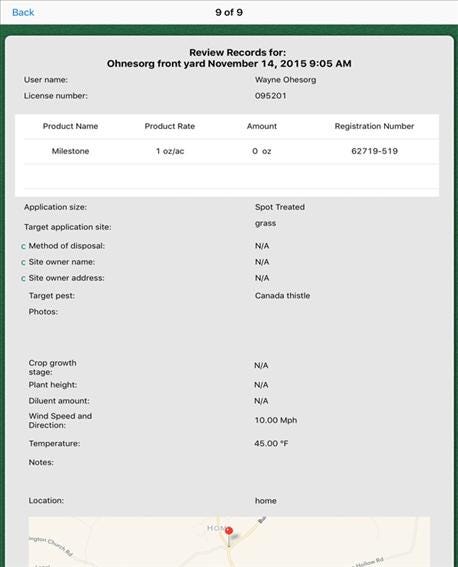July 25, 2016

Whether you're monitoring pasture growth, scouting corn and soybean fields, or monitoring soil water conditions, it's likely that the University of Nebraska-Lincoln's Institute of Agriculture and Natural Resources has a smartphone app for that. Here's a quick look at several popular IANR mobile apps:
GrassSnap App

GRASS SNAP: Here is a screenshot of the main menu page of this app, which automatically organizes pasture monitoring and has an overlay feature to help assess conditions from year to year.
Released in 2014, GrassSnap takes pasture monitoring into the digital age. According to Nebraska Extension educator Bethany Johnston, this app takes ranchers through the steps of pasture monitoring, recording comments about each pasture and storing photographs and data in pasture folders that are stamped with the pasture name, GPS coordinates, date and direction. The app quickly downloads information to a computer. It is available for Apple systems for smartphones and tablets, with the Android version scheduled to be released this fall. "The Apple version has had over 1,000 downloads last year from several states," says Johnston. "For producers who have had to monitor without GrassSnap, they realize the time saved is huge." According to Johnston, the overlay of the original lookout photo is the best feature of the app, because it allows producers to easily get the same view every year for comparison. Get more information at go.unl.edu/GrassSnap.
Pesticide Record Keeper 2.0 (PeRK)

RECORDKEEPING 2.0: Here is a screenshot of the Pesticide Record Keeping 2.0 app which allows producers to enter all of the information about their pesticide treatments.
This app records pesticide product applied and how much was applied, product application rate, target site and pests, date and time of application, temperature, wind speed, and disposal method. It allows producers to place a large amount of information about their pesticide treatments into one simple recordkeeping app. The app meets all of the requirements of Nebraska state law for applying restricted-use pesticides. It also uses a device's GPS coordinates to note the location of the applications. Under additional resources is a link to Nebraska's DriftWatch map. According to Nebraska Extension educator Wayne Ohnesorg, one of the benefits to the app is the fact that no Internet access is needed to operate it once it is downloaded. "It requires users to input the products, application sites, pests and crops manually, but it will remember them for use later," he says. "So a little legwork up front leads to quick input later." Get more information at cropwatch.unl.edu.
Ground Spray
Ground Spray, available at the Apple App Store and Google Play for Apple and Android mobile devices, allows applicators or growers applying pesticides to monitor the droplet size of their sprayer setup, or compare different droplet sizes with different setups to optimize their application efficiency or mitigate drift potential. Applicators can select their setup, including nozzle and pressure and currently three different tank solutions, to know how the application might look. "I think there's value in knowing how much drift potential there is. Applicators can see what percentage of small droplets there are in that spray and can select nozzles that would be better if drift is a big concern," says Greg Kruger, UNL Extension cropping systems specialist who helped designed the app. "If drift isn't a huge concern, applicators can look at nozzles that would get them smaller droplets with better efficacy for applications." For more information on Ground Spray, visit cropwatch.unl.edu/nebraska-app-unl-ground-spray-estimates-droplet-size.
Aphid Speed Scout
Aphid Speed Scout, available at the Apple App Store and Google Play for Apple and Android mobile devices, is a scouting app to help growers make sure they know whether or not they need to treat for soybean aphids. Speed Scout also includes a visualization piece to help train the user's eye to count aphids visually — from zero up to 100 aphids per plant. True to its name, the tool uses the speed scouting . Once you count 40 aphids per plant, the plant is counted as infested. The speed scouting method is based on the 250 aphids-per-plant threshold. "You scout 11 to 31 plants, and the app will kick back whether you need to scout another five. Then you return in seven to 10 days and scout again," explains Wayne Ohnesorg, UNL Extension educator in Madison County who helped design the app. If you need to treat, the app will tell you, and you need to come back and confirm another treatment in three to four days." For more information, visit ianrmedia.unl.edu/aphid-speed-scout-app.
You May Also Like




